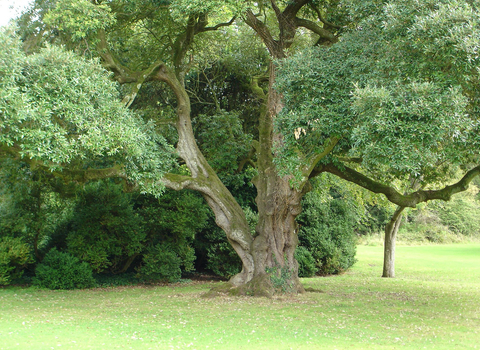
©Chris Guise
Holm oak
The Holm oak is an introduced species that has been widely planted near the coast and in parkland. It is self-seeding in the south of the UK. Its young leaves are spiny like Holly leaves, and it produces acorns.
Scientific name
Quercus ilexWhen to see
January to DecemberTop facts
Category
Stats
Height: up to 20mIntroduced, but naturalised species.
